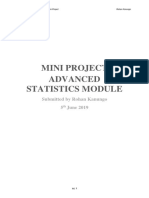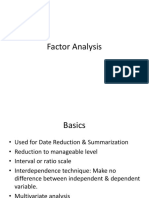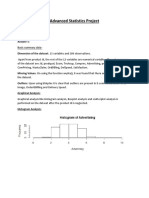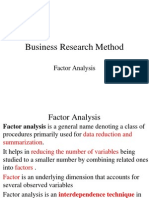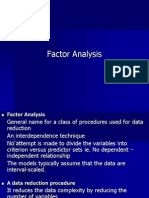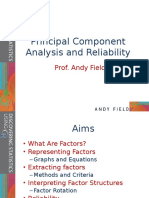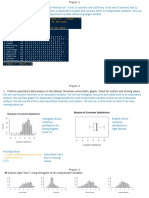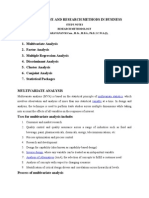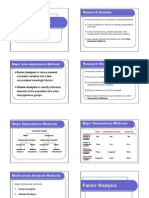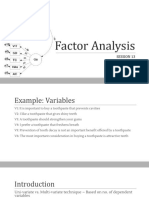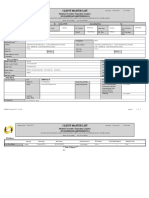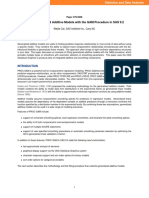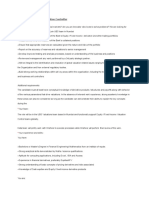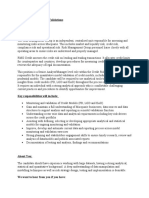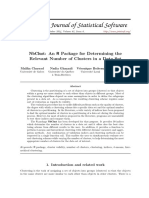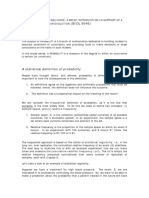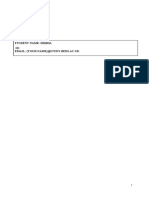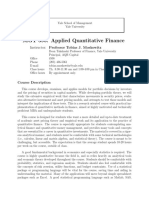0% found this document useful (0 votes)
86 views17 pagesProject 2: Submitted By: Sumit Sinha Program & Group: Pgpbabionline May19 - A
This document summarizes the exploratory data analysis and modeling performed on a customer satisfaction dataset. Key steps included:
1. Checking for missing data and outliers, computing descriptive statistics, and visualizing variable relationships. Multicollinearity was found between some variables.
2. Performing principal component analysis and extracting 4 factors explaining 80% of variance, which were interpreted and labeled.
3. Conducting multiple linear regression with the 4 factors as independent variables and customer satisfaction as the dependent variable. The model was found to fit the data well with an R-squared of 0.745.
Uploaded by
sumit sinhaCopyright
© © All Rights Reserved
We take content rights seriously. If you suspect this is your content, claim it here.
Available Formats
Download as PDF, TXT or read online on Scribd
0% found this document useful (0 votes)
86 views17 pagesProject 2: Submitted By: Sumit Sinha Program & Group: Pgpbabionline May19 - A
This document summarizes the exploratory data analysis and modeling performed on a customer satisfaction dataset. Key steps included:
1. Checking for missing data and outliers, computing descriptive statistics, and visualizing variable relationships. Multicollinearity was found between some variables.
2. Performing principal component analysis and extracting 4 factors explaining 80% of variance, which were interpreted and labeled.
3. Conducting multiple linear regression with the 4 factors as independent variables and customer satisfaction as the dependent variable. The model was found to fit the data well with an R-squared of 0.745.
Uploaded by
sumit sinhaCopyright
© © All Rights Reserved
We take content rights seriously. If you suspect this is your content, claim it here.
Available Formats
Download as PDF, TXT or read online on Scribd
/ 17



